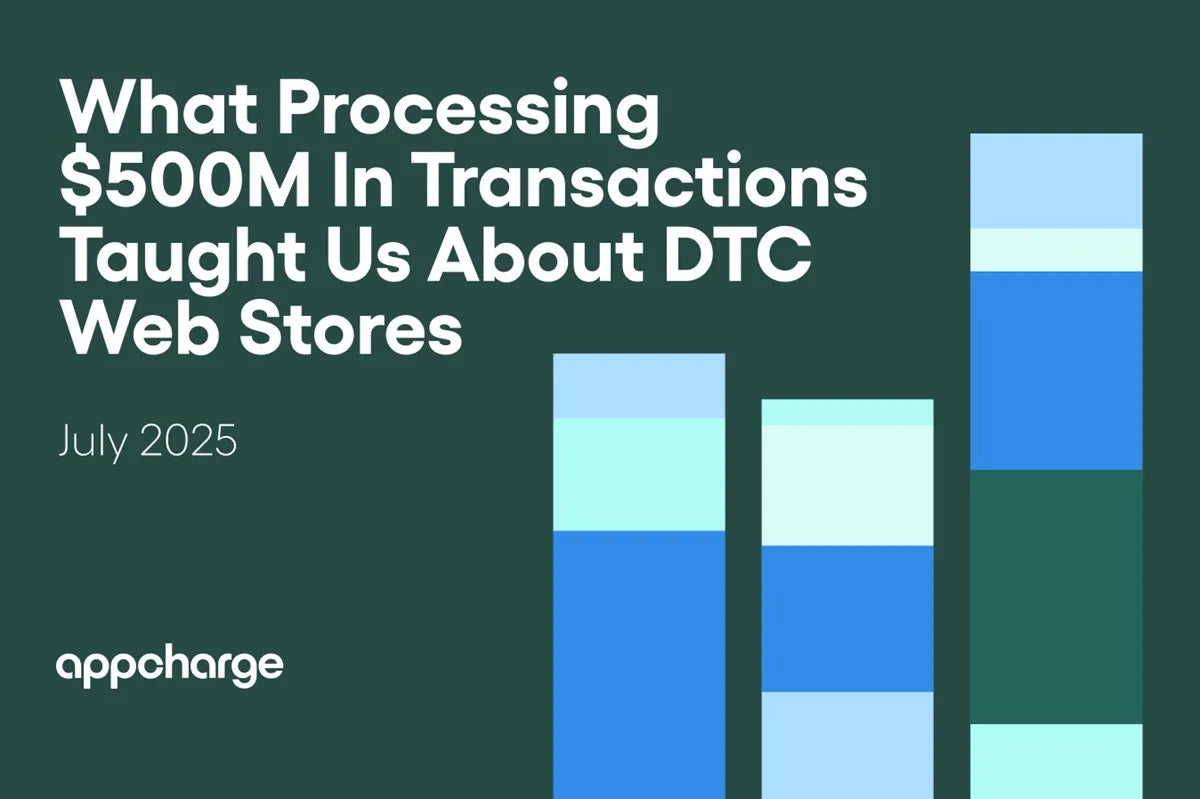
Navigating the Complexities of Payment Methods in Mobile Game Web Stores
Table of Contents
- Key Highlights
- Introduction
- Regional Payment Preferences: A Global Overview
- The Dominance of PayPal in Specific Markets
- Understanding First-Time Purchases and Player Retention
- The Impact of User Experience on Revenue
- Strategies for Optimizing Direct-to-Consumer Approaches
- The Role of Appcharge in the Evolving Landscape
- Conclusion
- FAQ
Key Highlights
- Appcharge's report reveals significant regional variations in payment methods for mobile game web stores, highlighting the need for universal solutions.
- Credit cards dominate globally but show minimal usage in specific countries, where local payment methods are preferred.
- Understanding player purchase behavior is crucial, as initial interactions can influence long-term customer loyalty and revenue.
Introduction
As the gaming industry rapidly evolves, the direct-to-consumer (DTC) payment landscape becomes increasingly intricate, with mobile game publishers at the forefront of this shift. A recent report from Appcharge, a leading payment platform, sheds light on more than $500 million in web store transactions, unveiling critical insights into consumer behavior and payment preferences across different regions. With web stores gaining traction among publishers aiming to enhance profit margins and deepen player engagement, understanding the diverse landscape of payment options is not merely beneficial—it's essential.
This article delves into the key findings of Appcharge's comprehensive report, outlining how regional preferences shape payment behavior and the implications for game developers. By examining these dynamics, this piece will illustrate how publishers can better cater to their audiences and optimize their revenue potential.
Regional Payment Preferences: A Global Overview
The report highlights a stark contrast in payment method preferences across various regions, emphasizing that a one-size-fits-all approach is ineffective in catering to a global gaming audience. While credit cards are the leading payment method worldwide, accounting for 35% of transactions, their usage declines sharply in certain countries. For instance, in the Netherlands, credit cards represent only 7% of transactions, with players favoring iDEAL—a local payment solution—over more traditional methods. Similarly, in Poland, the preference leans heavily towards Blik, a mobile payment system that has gained substantial traction.
This regional disparity necessitates that game publishers adopt localized payment strategies to ensure they meet the preferences of their players. The implications of not adapting to these preferences are significant; alienating potential customers by not providing their preferred payment options can lead to lost sales and diminished player loyalty.
The Dominance of PayPal in Specific Markets
Germany provides a compelling case study regarding the importance of localized payment solutions. The Appcharge report reveals that a staggering 64% of web store transactions in Germany are conducted via PayPal. This figure starkly contrasts with the global average of just 22%, underscoring the critical role PayPal plays in the German market.
This situation poses a challenge for publishers aiming for a universal payment solution. While PayPal might be essential in Germany, it does not guarantee success in other regions where different payment preferences prevail. Publishers must be wary of a strategy that relies too heavily on one payment method, as this can limit their ability to capture a broader audience.
Understanding First-Time Purchases and Player Retention
The journey from initial interest to actual purchase is another crucial aspect highlighted in Appcharge's findings. The report indicates that the median time from a player's first visit to their first purchase is approximately 2.6 days. This timeframe suggests that many players require several interactions—touchpoints—before they feel comfortable making a purchase.
Moreover, the data reveals a promising trend: once a player makes their first purchase, there is a significant likelihood they will return for a second. In fact, 50% of first-time buyers go on to make a subsequent purchase. This statistic emphasizes the importance of optimizing the initial store experience to convert casual visitors into loyal customers. By prioritizing user experience and simplifying the purchasing process, publishers can enhance conversion rates and foster long-term player relationships.
The Impact of User Experience on Revenue
The user experience (UX) during the initial store visit plays a pivotal role in influencing buyer behavior. Appcharge emphasizes that if developers do not support the payment methods that players trust and prefer, they risk complicating the purchasing process. The simpler and more intuitive the purchasing experience, the more likely players are to complete a transaction.
Furthermore, the report suggests that untapped opportunities exist following a player's first purchase. For instance, strategic follow-ups, personalized offers, and loyalty programs can encourage repeat purchases and increase the overall lifetime value (LTV) of customers. Publishers must leverage data analytics to gain insights into player behavior and tailor their offerings accordingly.
Strategies for Optimizing Direct-to-Consumer Approaches
Building an effective DTC approach requires an in-depth understanding of player preferences and behaviors. Appcharge’s findings underscore that game publishers must adapt to the diverse ways in which people engage with games and make payments. The complexity of the global marketplace necessitates the implementation of flexible, geography-agnostic monetization tools that resonate with local audiences.
To achieve this, publishers can consider the following strategies:
1. Implementing Local Payment Solutions
Understanding the payment methods favored in specific regions allows publishers to cater to local preferences. By integrating popular local payment solutions alongside global options, such as credit cards and PayPal, game publishers can enhance their customer base and drive sales.
2. Enhancing User Experience
Creating an optimal user experience should be a priority for publishers. This includes simplifying the checkout process, offering multiple payment options, and ensuring that the store interface is user-friendly and visually appealing. A seamless UX can significantly impact conversion rates and foster player loyalty.
3. Utilizing Data Analytics
Leveraging data analytics to track player behavior and purchasing patterns enables publishers to tailor their marketing strategies effectively. By identifying key touchpoints and understanding the factors that influence purchasing decisions, publishers can make informed decisions to drive engagement and sales.
4. Fostering Player Relationships
Building strong relationships with players can lead to long-term loyalty and increased revenue. Publishers should consider implementing loyalty programs, personalized offers, and regular engagement through updates and community interactions to keep players invested in their games.
The Role of Appcharge in the Evolving Landscape
Appcharge positions itself as a crucial partner for game publishers navigating the complexities of the DTC payment landscape. With its comprehensive suite of tools—including fully branded web stores, gamified offers, and global payment solutions—Appcharge aims to empower publishers to sell directly to their players. The company's approach focuses on enhancing player relationships, improving profit margins by up to 35%, and offering a premium experience that resonates with gamers.
Based in Tel Aviv, Israel, and backed by investors such as Gillot Capital Partners and Play Ventures, Appcharge is dedicated to helping publishers adapt to the diverse and rapidly changing payment landscape. By focusing on delivering innovative and flexible solutions, Appcharge strives to enable game developers and publishers to thrive in an increasingly competitive market.
Conclusion
The findings from Appcharge's report illuminate the intricate web of payment preferences that mobile game publishers must navigate to succeed in the DTC arena. With significant regional variations in payment methods and a clear connection between user experience and purchasing behavior, publishers must adopt a nuanced approach to their payment strategies.
By understanding the complexities of player preferences and leveraging technology to enhance the purchasing experience, game developers can unlock new revenue streams and foster lasting relationships with their audience. As the gaming industry continues to evolve, staying ahead of these trends will be essential for publishers aiming to thrive in a competitive landscape.
FAQ
What is the main takeaway from Appcharge's report?
The report highlights the importance of understanding regional payment preferences and optimizing the user experience to drive sales and enhance player loyalty.
How can publishers improve their payment strategies?
Publishers can enhance their payment strategies by implementing local payment solutions, improving user experience, utilizing data analytics, and fostering strong player relationships.
Why is it important to cater to local payment preferences?
Catering to local payment preferences helps publishers avoid alienating potential customers and increases the likelihood of completed transactions, ultimately boosting sales.
What role does Appcharge play in helping game publishers?
Appcharge provides a comprehensive suite of tools that empower game publishers to sell directly to players, enhance user experience, and optimize payment methods to maximize revenue.
POWER your ecommerce with our weekly insights and updates!
Stay aligned on what's happening in the commerce world
Email Address
Handpicked for You

08 September 2025 / Blog
How to Avoid Greenwashing: Rules, Real-World Examples, and a Practical Playbook for Honest Environmental Claims
Read more
08 September 2025 / Blog
Klaviyo 2025: How its AI-Driven CRM Transforms Shopify Email Marketing and the Customer Experience
Read more
08 September 2025 / Blog


